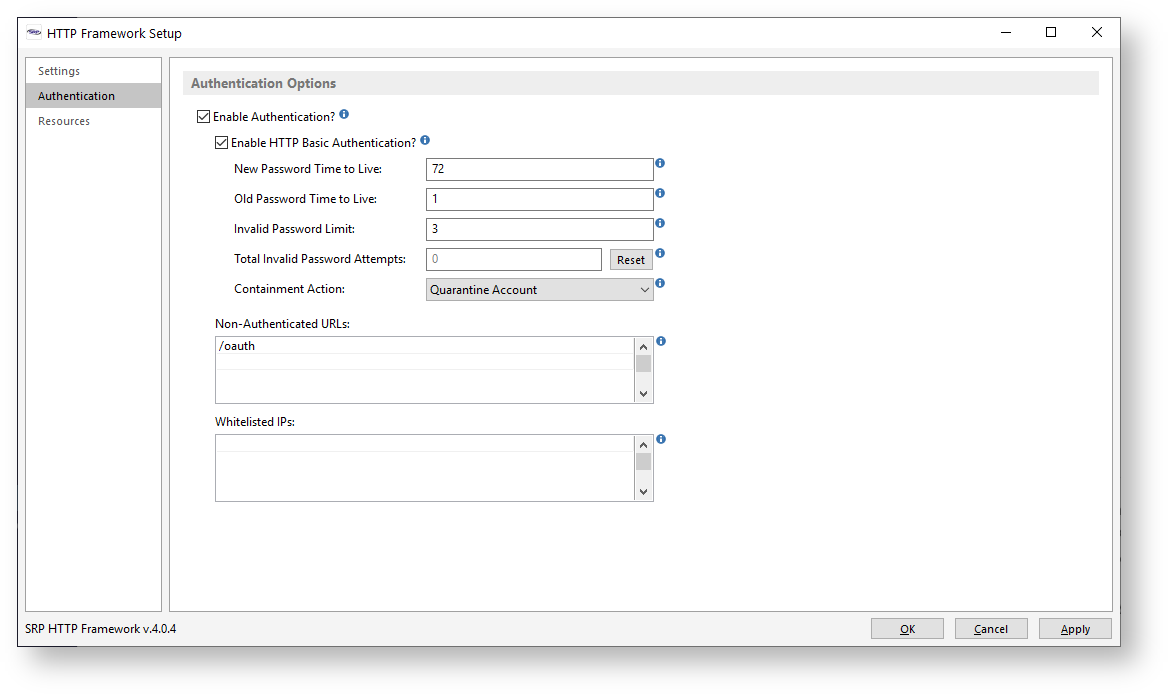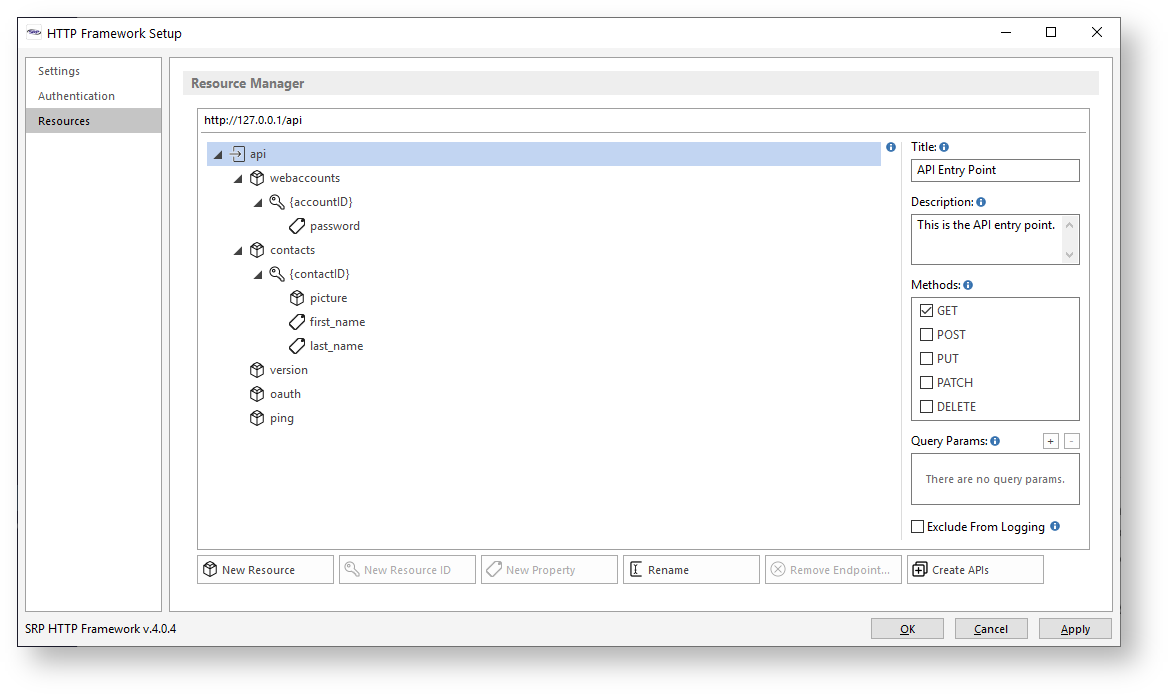Page History
...
- Home URL - This is the URL to the home page of the the main site (e.g., www.examples.org). An incorrect URL does not prevent the SRP HTTP Framework from responding to requests but it will affect how the response is created. If you are doing sandbox testing then just keep this as 127.0.0.1.
- API URL - This is the URL segment that follows the Home URL and serves as the entry point to your APIs (e.g., www.examples.org/api). Like the Home URL setting, if this is incorrect it will not prevent the SRP HTTP Framework from responding. If you are doing sandbox testing then just keep this as /api.
- Enable Logging? and Capture Path - These settings tell the SRP HTTP Framework whether logging should be enabled and where the log files should be stored. It is good practice to keep logging enabled. Change the path to any suitable location.
- API Call Procedure - This tells the SRP HTTP Framework whether to use the new API style routines (e.g., the CONTACTS_API stored procedure) or the legacy Service style routines (e.g., the HTTP_CONTACTS_SERVICES stored procedure). If this is a new project or if you are looking to migrate to the new API routines then just keep this set to Web API.
Authentication Page
Various authentication methods are supported via the settings on this page. If this is a new project then we recommend leaving the default configuration values alone and only make changes as business needs dictate. If a quick test of an API is required and providing authentication is difficult (as would be the case if an API endpoint was pasted directly into a web browser), then disabling authentication via the Enable Authentication? setting will work. However, we recommend only doing so for limited periods at a time or only when this is a sand-alone sandbox system.
Resources Page
All valid endpoints are defined on this page through the creation of new resources, resource IDs, or resource properties. If this is a new project then leave this page alone until you have confirmed that the SRP HTTP Framework is properly installed and responding to API requests.

